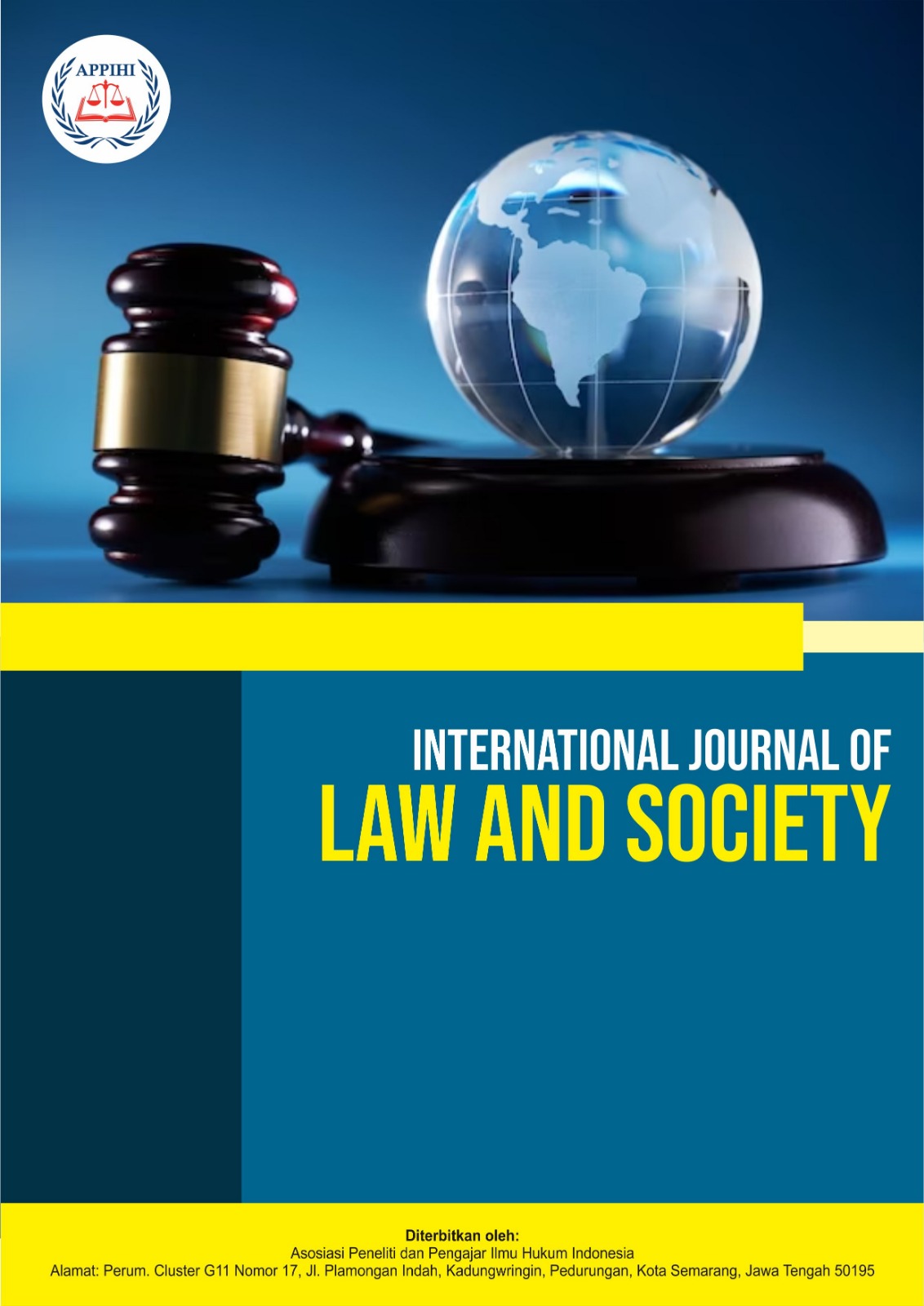Legal Protection for Doctors in Medical Practice Using Telemedicine According to Law Number 17 of 2023 Concerning Health
DOI:
https://doi.org/10.62951/ijls.v2i2.352Keywords:
legal protection, doctor, medical practice, telemedicineAbstract
Health is a basic right guaranteed by the Indonesian constitution, as stipulated in Article 28H of the 1945 Constitution and Article 34 paragraph (3), which states that the state is responsible for the provision of adequate health care facilities for all citizens. Nonetheless, challenges in the provision of health services in remote areas are still significant, especially related to the limitations of facilities, medical personnel, and service quality. The development of technology, particularly telemedicine, has opened up new opportunities in the delivery of health services, which can overcome geographical limitations and improve community access to medical services. The type of research in this study is normative juridical. The research results in this discussion are the protection of doctors and the regulation of telemedicine policies in Indonesia, by reviewing Law Number 17 of 2023 concerning Health regarding the implementation of telemedicine between health service facilities. Although telemedicine can expand access to health, the risks associated with remote diagnosis and treatment require special attention in terms of legal protection of health workers. Therefore, adaptive legal tools are needed to accommodate the growing development of health technology and provide legal protection for the parties involved in the implementation of online-based health services.
Downloads
References
Aji Prakoso. (2023). Kajian viktimologi dalam tindak pidana penggelapan pada perusahaan pembiayaan. Sivis Pacem, 1(1), 47-68. Retrieved from https://sivispacemjournal.my.id/index.php/login/article/view/3
Arman Anwar. (2013). Aspek hukum penggunaan telemedicine. Jurnal FIKI, 1(1). Retrieved from https://publikasi.dinus.ac.id/index.php/fiki2013/article/view/525
Bryan A. Garner. (2009). Black’s law dictionary (p. 1343). St. Paul: West.
Catur Nugroho. (2020). Cyber society: Teknologi, media baru, dan disrupsi informasi (1st ed., p. 27). Kencana Prenada Media.
Faiz Emery Muhammad, & Beniharmoni Harefa. (2023). Pengaturan tindak pidana bagi pelaku penipuan phishing berbasis web. Jurnal USM Law Review, 6(1), 226-241. https://doi.org/10.26623/julr.v6i1.6649
Febriana Sulistya Pratiwi. (n.d.). Baru 4,89% penduduk Indonesia pernah gunakan telemedicine. Data Indonesia. Retrieved from https://dataindonesia.id/kesehatan/detail/baru-489-penduduk-indonesia-pernah-gunakan-telemedisin
Fian Yunus. (2020). Polri dan era disruption: Perang melawan revolusi kejahatan abad 21 (1st ed., p. 11). Pustaka Star’s Lub.
H. Zein Asyhadie. (2020). Aspek-aspek hukum kesehatan di Indonesia (2nd ed., p. 2). Rajawali Pers.
Joni Afriko. (2016). Hukum kesehatan (teori dan aplikasinya) dilengkapi undang-undang kesehatan dan keperawatan (p. 27). IN MEDIA.
Knowles, M., & Krasniansky, A. (2023, February 21). Consumer adoption of digital health in 2022: Moving at the speed of trust. Retrieved from https://rockhealth.com/insights/consumeradoption-of-digital-health-in-2022-moving-at-the-speed-of-trust/
Lilik Mulyadi. (2008). Bunga rampai hukum pidana perspektif teoritis dan praktik (p. 389). PT. Alumni.
M. Nur Sholikin. (2022, January 19). Urgensi menyusun regulasi komprehensif telemedicine. Hukumonline. Retrieved from https://www.hukumonline.com/berita/a/regulasi-telemedicine-lt61e77813f14ea?page=1
Mahsun Ismail. (2018). Kebijakan hukum pidana cyberpornography terhadap perlindungan korban. Jurnal Hukum Ekonomi Syariah, 1(2), 117-134. https://doi.org/10.30595/jhes.v1i2.3734
Marcel Seran, & Anna Maria Wahyu Setyowati. (2010). Dilema etika dan hukum dalam pelayanan medis (1st ed., p. 7). Mandar Maju.
Munandar Wahyudin Suganda. (2017). Hukum kedokteran (p. 8-9). Alfabeta.
Myrick, K. L., Mahar, M., & DeFrances, C. J. (2024, February). Telemedicine use among physicians by physician specialty: United States, 2021. CDC. Retrieved from https://www.cdc.gov/nchs/products/index.htm
Rani Tiyas Budiyanti. (2020). Pasien online: Panduan literasi kesehatan di era 4.0 (1st ed., p. 13). Asta Karya Kreativa.
Rencana Strategis Kementerian Kesehatan Tahun 2015-2019.
Reni Agustina Harahap. (2021). Etika hukum & kesehatan (1st ed., p. 153). Merdeka Kreasi.
Syahiduz Zaman. (2024). Telemedicine dan masa depan layanan kesehatan di Indonesia. Kompasiana. Retrieved from https://www.kompasiana.com/syahiduzzaman5860/6672181534777c44680bc282/telemedicine-dan-masa-depan-layanan-kesehatan-di-indonesia?page=4&page_images=1
Undang-Undang Dasar Negara Republik Indonesia Tahun 1945.
Urness, D., Wass, M., & Bulger, T. (2006). Client acceptability and quality of life—telepsychiatry compared to in-person consultation. Sage Journals.
World Health Organization (WHO). (2010). Report on the second global survey on eHealth 2009: Telemedicine – Opportunities and developments in member states (ISBN: 978-92-4-156414-4). WHO Press.
Worldometer. (2025). Coronavirus statistics. Retrieved from https://www.worldometers.info/coronavirus/
Downloads
Published
How to Cite
Issue
Section
License
Copyright (c) 2025 International Journal of Law and Society

This work is licensed under a Creative Commons Attribution-ShareAlike 4.0 International License.





